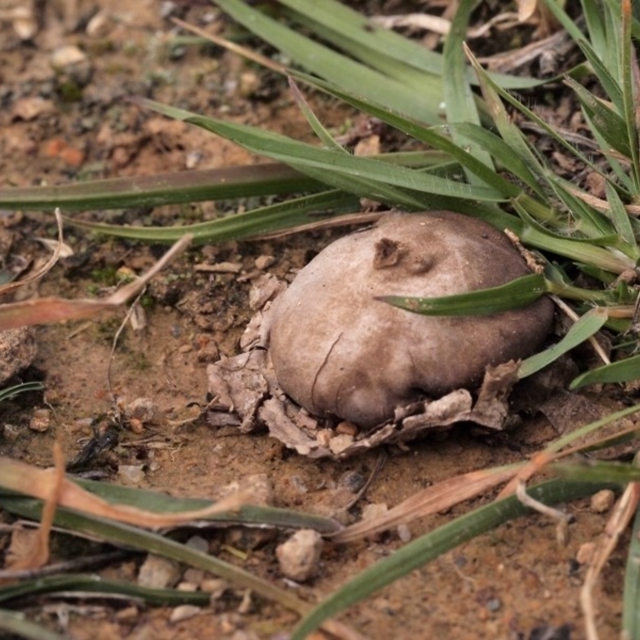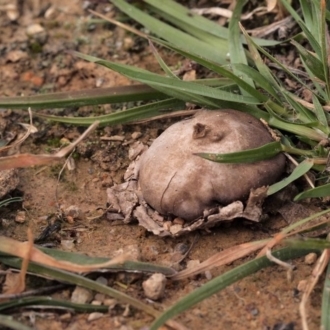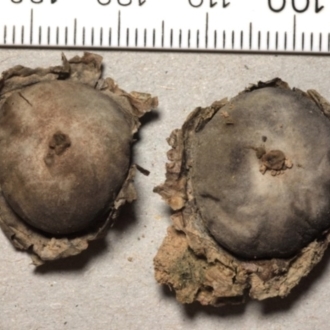Disciseda
The fruit body is a puffball, up to 4 centimetres in diameter (but often between a centimetre or two) and some shade of brown. The fruit body is somewhat flattened and cushion-like, well-away from spherical.
Around the lower half of a freshly exposed fruit body there is an extra covering, composed of fungal tissue tightly bound to and soil or sand grains. Here (http://www.cpbr.gov.au/cgi-bin/phtml?pc=f&pn=453&size=3) are some very fresh specimens, still with very marked sand cases. With age that soil/sand case will largely erode, leaving just a small stub at the base.
In at least some Disciseda species the puffball starts ‘upside down’ and what you eventually see as that basal casing is initially at the top. The puffball starts partly buried, with the lower half very loosely attached to the surrounding soil but the upper half with a tightly bound and weighty casing of soil or sand. As the puffball matures it dries, shrinks a little and becomes loose in the ground. Wind or rain may than dislodge it and, because of its weight, that casing ends up on what is now the lower half of the liberated puffball. It is then like one of those toys, heavily weighted at the base that, no matter how often you try to knock it over, always rights itself.
The upper right specimen in the previous photo shows what you see in the initial ‘upside down’ stage. Here is another specimen, also ‘upside down’ but still in situ: http://www.cpbr.gov.au/cgi-bin/phtml?pc=f&pn=450&size=3.
Here is a cross-section of a freshly exposed Disciseda: http://www.cpbr.gov.au/cgi-bin/phtml?pc=f&pn=451&size=3. You can see the casing, tightly bound in the lower half, but with a loose margin higher up.
In Australia species of Disciseda are found in dry or exposed habitats, from near coastal to well-inland. In Canberra I tend to find them in sparsely vegetated ‘waste’ areas with exposed soil or where there are at least patches of bare soil in denser vegetation.
No sightings currently exist.







